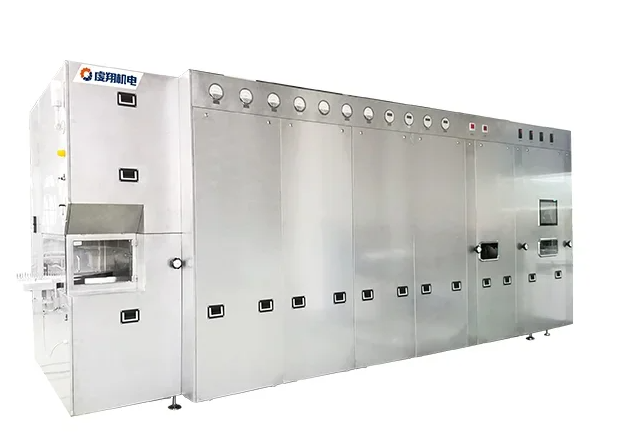In today's modern world, mechanical refrigeration systems play a crucial role in maintaining comfortable indoor environments. Whether it's a scorching summer day or a sweltering office space, these systems work tirelessly to cool our surroundings. But have you ever wondered how they achieve this feat? In this article, we will delve into the inner workings of mechanical refrigeration systems and explore the various processes involved in efficiently cooling a room.
- The Basics of Mechanical Refrigeration Systems:
To understand how a mechanical refrigeration system cools a room, we must first grasp the fundamental principles behind its operation. At its core, this system relies on the principles of thermodynamics, heat transfer, and fluid mechanics. It consists of several key components, including a compressor, condenser, expansion valve, and evaporator. - The Refrigeration Cycle:
The heart of a mechanical refrigeration system lies in its refrigeration cycle, which is a continuous process that enables the transfer of heat from the indoor environment to the outdoors. This cycle involves four main stages: compression, condensation, expansion, and evaporation.
2.1 Compression:
The process begins with the compressor, which plays a vital role in raising the temperature and pressure of the refrigerant gas. As the gas is compressed, its molecules become tightly packed, resulting in an increase in temperature.
2.2 Condensation:
Next, the high-pressure, high-temperature refrigerant gas flows into the condenser. Here, it comes into contact with cooler air or water, causing it to release heat and transform into a high-pressure liquid. This heat transfer process is crucial in removing the excess heat from the system.
2.3 Expansion:
The high-pressure liquid refrigerant then passes through the expansion valve, where its pressure is rapidly reduced. This sudden drop in pressure causes the refrigerant to expand and cool down significantly.
2.4 Evaporation:
The cooled refrigerant, now in a low-pressure state, enters the evaporator. As it flows through a series of coils or pipes, it absorbs heat from the room, causing the surrounding air to cool down. The refrigerant then evaporates into a low-pressure gas, ready to restart the cycle.
- Heat Exchange and Energy Efficiency:
Efficient heat exchange is crucial for the optimal functioning of a mechanical refrigeration system. To enhance heat transfer, various techniques such as finned coils, fans, and refrigerant flow control mechanisms are employed. Additionally, advancements in technology have led to the development of energy-efficient systems that minimize power consumption and reduce environmental impact. - Regulation and Control:
To maintain a comfortable room temperature, mechanical refrigeration systems rely on sophisticated control mechanisms. These systems monitor the ambient temperature and adjust the operation of the compressor, fans, and other components accordingly. This ensures that the cooling capacity matches the cooling demand, optimizing energy usage and preventing unnecessary wastage.
Conclusion:
Mechanical refrigeration systems are intricate marvels that efficiently cool our living and working spaces. By understanding the principles and processes involved, we can appreciate the complexity behind their operation. From the compression of refrigerant gases to the heat exchange in the condenser and evaporator, each component plays a vital role in achieving the desired cooling effect. As technology continues to advance, we can expect even more efficient and environmentally friendly refrigeration systems in the future.



